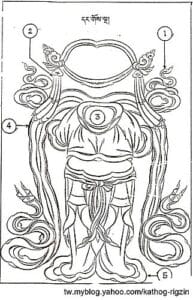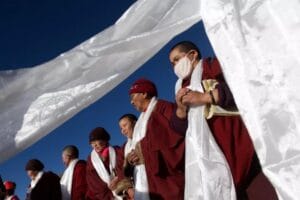
The clothes of the Buddha and Bodhisattva are solemn
Tibetan Buddhism’s prudence and rigor on the inheritance of the Dharma are evident from the translation of the Tibetan scriptures, the academy system, and the practice of rituals. “The Thirteen Solemnities of the Buddha” It is divided into five satin robes and eight treasures [1] Silk satin five vestments 1. A streamer hanging behind a blue satin crown2. The crown hanging under the crown of the Buddha of the five directions3. White satin shoulder drapery with gold patterns(If you want to fully follow the rules for painting thangkas, you should draw an ornament called yin and yang mantle (armpit) from the armpit of the left shoulder to the armpit of the right shoulder.)4. From the cuffs of the jacket to the palms, the green satin draped down5. Inner skirts that cover the lower body, as well as various other lower skirts(According to the common Buddha painting method, the skirt is

